Forms of Address
One of the fundamental tools for communicating with someone is knowing what to call them in verbal and written communication. The purpose of names, titles and forms of address is to help you know how to refer to someone when:
- Speaking directly to them in conversation
- Speaking about the person as in a platform introduction
- Writing to them: names in an address on an envelope and letter salutations
- Preparing place cards, name badges, and table tent cards.
In today’s global market we communicate daily with people who may have different titles and come from different countries or cultural backgrounds. That’s why forms of address and the proper use of titles and names are so important in business and in government. This topic can get quite complicated; there are many variations and often there is more than one appropriate answer. We have focused on the most common formats and provided key terms and basic rules/guidelines that apply under most situations encountered in the global business arena. If you don’t find the answer to your question here, check the books and links on the Resources tab, or contact us for more guidance. Included at the end of section are some key examples.
So, you are writing a letter to someone with a title, printing place cards, or wondering how to address a dignitary in person. Where do you start?
Terms To Know:
Titles: In everyday usage, a “title” can be several different things: a functional or professional job description (CEO, ambassador, consul general, admiral), an honor that has been bestowed (perhaps a knighthood), a position in the nobility that has been inherited (duke, earl, baron), or a sign of respect (Don/Doña). Here, our focus is on those titles you will encounter most often in our global economy.
Honorific: an “honorific” in the United States usually means a polite form of address used to show respect. It can indicate the individual’s office, rank or profession. You know and use some honorifics regularly, like Mr., Mrs., Ms., Madam, Dr., Senator, Professor, Reverend… These can indicate a person’s gender, marital status or profession.
Courtesy Title: these are titles extended by custom as a courtesy to recognize persons of some distinction usually high-ranking officials. They are used by others to address those who are entitled to the courtesy title and not by the individual when referring to himself. The most common include: the Honorable, His/Her Excellency, the Right Honourable, etc.
Note: In the United Kingdom, “courtesy title” can have a slightly different and more technical meaning. Debrett’s, an authority on British etiquette and tradition, defines a courtesy title as “a title such as Lord, Lady or The Honorable, which is usually borne by the sons, daughters, daughters-in- law, brothers, sisters and sisters-in- law of a peer.” As succinctly described by Debrett’s, the Peerage is a hierarchy of titles of various ranks conferred by the Sovereign upon his or subjects. There is no equivalent in the United States.
Some Basic Rules:
- 1. Consider the culture. The rules often vary by culture. Names may be formatted or structured differently. For example, in some Asian countries, like China, we write the family name first, followed by the person’s given name. In many Latin American countries, the family name is composed of both the father’s and mother’s family name. Still in other cultures, family names are not used at all, and in others, women may keep their maiden names even after marriage. Some celebrities also go by just one name. Likewise, titles can be different and vary by country or culture, and be used with varying degrees of frequency.
- 2. Consult with the key individuals or their staff. When in doubt, especially for senior business or government leaders, always confirm or ask the dignitary’s office, staff, or even the dignitary herself, what is appropriate. Sometimes your usage of title and form of address may be absolutely correct, but the individual may have a different personal preference. So when in doubt, ask. This will save you stress and uncomfortable situations.
- 3. Research titles when working globally. Even when titles seem equivalent, they may not be. The president of an organization in one country may be the equivalent to the board chair in another. So understand the person’s responsibilities, find the appropriate equivalent and translate carefully. Some titles, like the Spanish licenciado, may not have equivalents, in which case discuss with your counterparts and decide how to address.
- 4. Proper usage can also depend on the degree of formality and type of event as well as what information organizers determine will help attendees interact. For example, at a business reception you may determine that names alone are sufficient and not include the person’s affiliation. At a business conference you might want to include the person’s professional title and affiliation. For a state, national or international event you may decide to add the individual’s city, state or country of origin. There are some examples of this below in this article. All are correct, even though they are different. Event organizers followed the basic rules then determined what format and information was most appropriate for their particular function.
Common Honorific Titles
The Honorable
“The Honorable” is one of the most commonly used honorifics for government officials, both in the U.S. and internationally. It is also the highest honorific for U.S. officials (see below for more information) within the United States, so whether the dignitary is the President-elect of the United States or the Mayor of Memphis, both would be “the Honorable.”
Who’s Honorable?
In the U.S., this honorific title applies to most high-ranking federal, state, and some local officials. We use the Honorable for most elected officials, some appointed ones, and even some who have retired. However, local jurisdictions vary considerably as to the titles and offices that exist, how they are filled (election or appointment) and what forms of address are used for each. For example, a school board member in most cities is not usually addressed as “the Honorable,” but might be in a few. Internationally, it is usually extended to mayors and most sub-national or state-level and provincial officials. Always check for practices in that jurisdiction or organization, and confer with protocol officers or the official’s office. With a little effort, you can ascertain who should and shouldn’t receive this courtesy.
Guidelines for using “The Honorable”
- Write it before the official’s full name. It should appear on the line above or to the left of the full name.
-
- Example: The Honorable Maria Johannesburg
- Write the Honorable out in full whenever possible.
- In the U.S. the person’s full name should follow the Honorable, not the person’s title.
-
- Example: Correct: The Honorable Jane Doe
- Mayor of the City of Los Angeles
- Incorrect: The Honorable Mayor Jane Doe
- However, in international usage you may occasionally see the courtesy title followed directly by the professional or official title, as shown above.
- By tradition, some officials are still called the Honorable even after they have left office. As a general rule, this applies to higher ranked, mostly nationally elected officials, but is usually also extended to governors, mayors, ambassadors, and judges. However, it is not the common practice for all others. When in doubt, check.
- The Honourable spelled with a “u” is the British spelling.
Note Regarding Members of City Councils, Aldermen, and Equivalent Positions: There is wide variation among cities, counties, and towns as to the use of honorifics for elected officials who are not the mayor. It is commonly used for those in elected, but not appointed posts, but you should verify what the practice is in your city or town. I once asked the New York City protocol office about this, and was told that there was not an official policy, but that council members would not object to being addressed by the honorific.
A Few Rare Times We Do Not Use an Honorific for U.S. Officials:
Here is an important exception to everything I have just described: in the U.S., there are a few very high officials who are addressed by office title only, and you would not use the Honorable, or even their names. Among these are:
- The President (see example below)
- The Vice President
- The Speaker of the House of Representatives
- The Chief Justice of the Supreme Court
The preferred honorific most commonly used around the world for the highest-ranked officials is His (or Her) Excellency. Some exceptions include the U.S., Great Britain, and the Commonwealth Nations. As a general rule, an official entitled to this honorific title may use it throughout his/her lifetime.
Foreign Officials who are entitled to the use of His/Her/Your Excellency include:
- Chiefs of state
- Heads of government
- Cabinet ministers and secretaries
- Deputy ministers or under secretaries
- Foreign ambassadors*
- Ministers plenipotentiary
- Minister-counselors
- Governors (varies by country)
- Other international high-ranking officials, usually at the federal or national level, and some state, territory, or province-level officials, most elected ones, some appointed, and even some who are retired. Confirm with protocol officers or the official’s office if you are unsure if it is appropriate to use it for a certain individual.
- *While it’s true that most officials in Great Britain and the Commonwealth Nations use the Honourable or the Right Honourable, you should note that ambassadors, governors general, and Commonwealth high commissioners from those nations typically use His/Her Excellency.
This is not an all-inclusive list. I’ve tried to include the titles of officials you will encounter most frequently.
Note: U.S. protocol tradition does not extend the use of His/Her Excellency to any U.S. government officials. However, foreign government officials may sometimes use it for U.S. officials, especially in diplomatic circles. In most countries, the protocol custom is to call all ambassadors His or Her Excellency, and so it would seem awkward to do otherwise. For example, a U.S. ambassador at his post in Angola might be referred to as “His Excellency” by Angolan government officials, although he would be “The Honorable” if he were in the U.S. Guideline for the use of His (or Her) Excellency
While these practices vary according to each nation’s protocol, in general:
- Write it before the official’s full name; it should appear on the line above, or to the left of the full name. For example: Her Excellency Maria Schroeder
- Write His/Her Excellency out in full, whenever possible.
- Upon leaving some offices, the custom is to continue to use His or Her Excellency for life, for the highest-ranked officials, mostly nationally-elected officials, and ambassadors. But this is not the case for every office or in every country. When in doubt, check.
Name Badges, Place Cards & Table Tents
Since the purpose of each is to facilitate interaction, pay attention to fonts and sizes as well as the paper or card stock used. The information should be easy to read while shaking hands or across the table. While the paper used can match the event theme and include a design or a discreet logo of the hosting organization, the focus should be on the content and not the design.
Name badges* are used to identify individuals and facilitate conversation and networking. These can include just the given and family name or include a professional or official title and organization. In the U.S. honorific titles are not usually included.
Place cards are used to advise people of their seats at a table, but can also be used to facilitate conversation at the table. If the purpose is also to facilitate table conversation amongst guests who may not know each other, small table tent cards may be used so that names can be written on both sides of the card. These are also often used at less formal events. In the U.S. place cards are usually written as you would address the individual in conversation. They can include the honorific title and family name but not the courtesy title. However, other variations are acceptable: given + family name or just first name.
When it’s a position held by only one individual at a time, like a mayor of a city, you can also use the official’s title alone without a name, or title and last name, depending on rank and the formality of the occasion. This is usually done for officials where only one person holds the title, i.e. the Secretary General of the United Nations, or only one person who holds the title is at the event; for example, the mayor of a city when in his jurisdiction and no other mayors are present. Less formal events may simply include the given and family name or in some cases only the given name. This may sound confusing, but the examples below and resources will help clarify.
Examples: The Secretary of Defense, The Governor of California, Governor Gonzales, Dr. Singh, Ms. Nassif
However, some countries do include the courtesy title as well as the honorific in addition to the name on place cards and table tents. If you have visitors from abroad who practice this custom, or you are organizing an event abroad, you may choose to defer to local practice. As always, the safe course of action is to have the format approved in advance by the key parties involved. Place cards come in different sizes but are typically about 3.5 x 2.5 inches. Small table tent cards that are used instead of place cards vary from the common place card size to about 7 x 2.5 inches.
If His/Her Excellency is included on a place card or table tent, the format would be: His Excellency Shimon Peres or, use the title alone instead: The Minister of Foreign Affairs of IsraelTable tents are typically used to identify speakers on a panel, as well as indicate where they are seated on a dais. Generally, these include an honorific title and full name on the side facing the audience, but can include the person’s position and/or affiliation. The information can be written on both sides although often the side viewed by the individual includes just the honorific and full name. Table tents come in many sizes, but commonly in the U.S. are usually one of two sizes, 2½ x 8½” & 3½ x 11″. The smaller ones may be used instead of place cards.
*Protocol Pointer: In my experience senior officials usually do not wear name badges especially when in their own jurisdictions, since it is assumed people know who they are. However, I recommend always preparing them for all dignitaries and officials attending, because some will want them. I actually had a visiting prime minister request a name badge since all of the other guests were wearing one.
Examples of Name Badges:

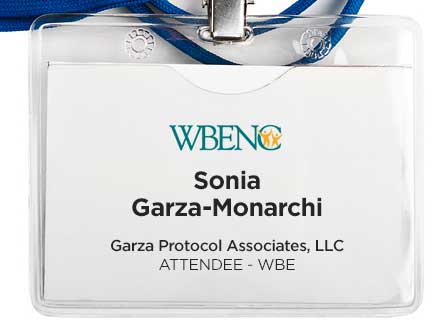

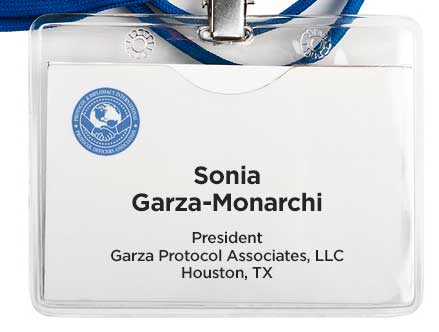
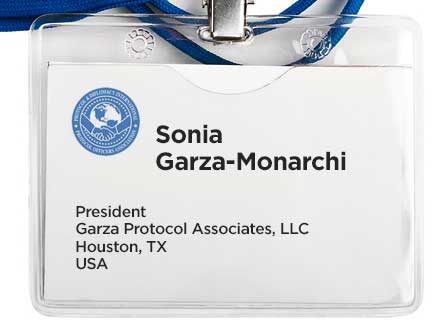
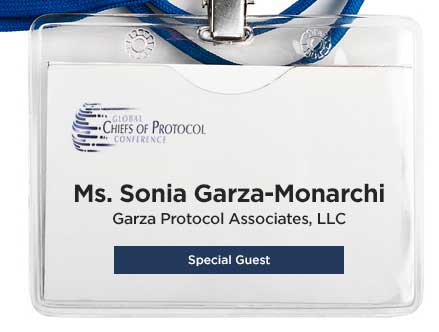
Note: In the U.S., honorific titles are not usually included on name badges, but this format is sometimes used at major global events to help international guests by providing the proper honorific title to use when communicating with each other.
Examples of Place Cards:
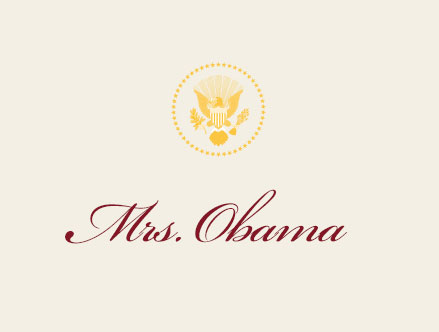
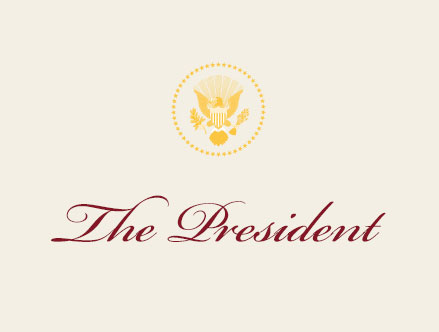
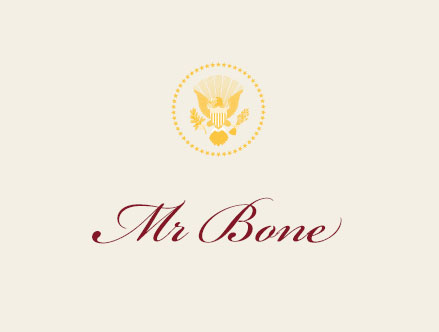
Examples of Table Tent Cards:

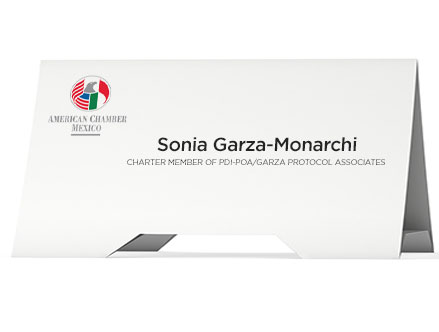

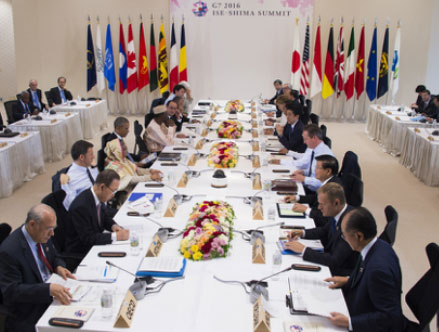
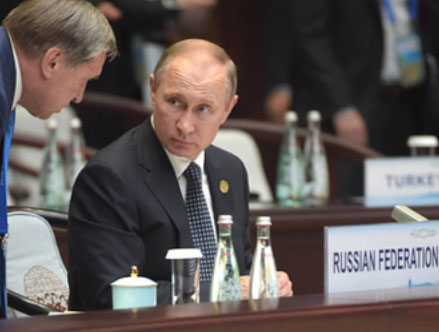
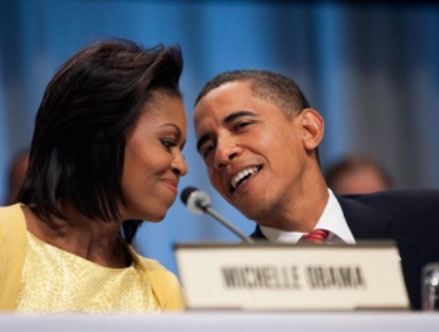
Correct Form for Correspondence
Salutations: People sometimes ask for a rule on proper salutations for a business letter. Here are some general guidelines for the most frequently used salutations in business letters:
The usual practice for high offices where there can only be one office holder (president, vice president, Speaker of the House), is:
- Salutation
- “Mr. (or Madam) Title.”
- A letter to an ambassador would begin with either
- “Dear Mr. Ambassador” or “Your Excellency.”
- A letter to a cabinet minister or secretary would begin
- “Dear Mr. Minister” or “Dear Madam Secretary,” or “Your Excellency,” as appropriate.
- For mayors, governors, senators, and judges
- “Dear Title Last Name” i.e. “Dear Mayor Smith,” is correct.
You would never use “The Honorable” in the salutation.
Correspondence Closing: while some experts promote the use of particular phrases when closing a letter to a dignitary or elected official, I do not feel this is a critical point. The polite, respectful, traditional closing of your choice will suffice. Is there really an important difference between “Sincerely,” “Yours truly,” and “Respectfully,”? Some authors suggest “respectfully” should be used for the President and chiefs of state, and “sincerely” for the others. In practice, it is not required.
Conversation:
- For U.S. presidents, vice presidents, cabinet secretaries, and ambassadors, the usual way you would speak to them in conversation is Mr. or Madam and their title:
- “Mr. President”
“Madam Secretary”
“Mr. Ambassador” - For secretaries and ambassadors, you will sometimes also hear “Secretary Last Name, “ or “Ambassador Last Name,” which is less formal, but still acceptable.
Senators, governors, mayors, and judges may be addressed with just their titles, or with title and last name: - Most other elected and appointed officials in the U.S. by tradition are properly addressed with Mr./Mrs./Ms./Dr. and their last names. However, many in the House of Representatives, state legislatures, and city councils prefer to have their titles used, so it is also permissible to do so:
- “Representative Jones”*
“Council Member Brown“
Note: While “Congressman” is not an official title, many members of the U.S. House of Representatives preferred to be addressed as “Congressman or Congresswoman” + Family Name. As a result, this practice is becoming more common.
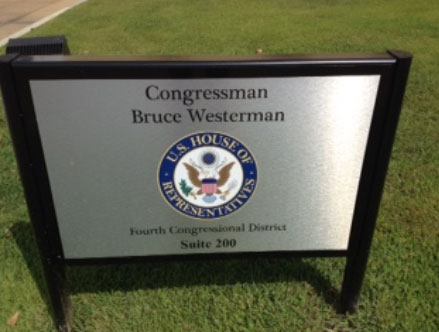
Platform Introductions to a Group:
A platform introduction is the term used when you are introducing someone to a group, typically from a stage or platform, often standing at a podium, often prior to a speech. It can also simply be an “introduction,” but “platform” helps distinguish it from an introduction between people in a conversation. Use:
- Honorific + full name + title.
- For example, “It is my honor to welcome our speaker today, the Honorable Mary Smith, Secretary of the Interior…”
Frequently Asked Questions
- How do you address individuals?
-
In business, what you call someone or how you address them usually has at least three parts:
- Courtesy Title + Full Name + Professional Title + Affiliation
- The Honorable Eric Greitens, Governor of Missouri
- His Excellency Georges Pompidou, President of France
- Sonia Garza-Monarchi, President, Garza Protocol Associates
Note: There may also be post-nominals, or initials after a person’s name that denote degrees, decorations, affiliations, or honors. These are only used in written communication on envelopes or letters but not in salutations, conversation or platform introductions.
- Cherie Blair, CBE, QC
- Michael Smith, PhD
- How do you address consular officials?**
-
The U.S. State Department does not usually extend the courtesy title “The Honorable” to consular officials from any nation, unless an individual merits it due to a previously held position (for example, a former mayor or U.S. ambassador now serving as a consular head of post). However, in many localities around the world and in the U.S., it has become tradition to address consular heads of post as the Honorable as a courtesy. Houston and Los Angeles are two examples; in Houston, all consular heads of post are “The Honorable,” unless the head of post is, otherwise entitled to be addressed as His Excellency (for example, if he holds the rank of ambassador). Should those localities stop doing this and adhere to State Department practices? Perhaps, but this is an example of how it can be difficult to change or discontinue a practice, as it might cause offense to “take away” an honorific that people are accustomed to.
U.S. practice is not to use the Honorable for our own nation’s consular officials, but sometimes they are extended that courtesy by the governments where they are posted.
- When do you use the Right Honourable?
- The Right Honourable is often used in Commonwealth and former Commonwealth nations for holders of certain offices or titles. It would generally be used in the same way as the Honorable, and may be abbreviated “the Right Hon.” or “the Rt. Hon.” I have also seen it without periods: “the Rt Hon”.
- How do you abbreviate the Honorable, and what is the correct spelling?
-
If possible do not abbreviate, but when needed “The Hon.” or “T.H.” are acceptable, if there is insufficient space to write it out. You may sometimes also see it without periods as “The Hon”.
“The Honourable” is the British spelling and is sometimes used in Australia, Canada, and the rest of the British Commonwealth. In fact, often “the Right Honourable” is used in those countries (which is usually equivalent to the U.S. “the Honorable”). If you see it on a dignitary’s stationery or biography, it would be appropriate for you to spell Honourable that way, too.
- How do you abbreviate His/Her Excellency?
- If you must abbreviate His/Her Excellency, either of these formats is correct “H.E.” or “HE”
- When speaking to someone who merits His/Her Excellency, how do you address him or her?
-
You can address the official either as “Your Excellency,” or by their government title: “Mr. (or Madam) Ambassador.” Many in the U.S. find it awkward to call someone “Your Excellency,” but it is correct when merited.
It is also correct to refer to a dignitary as “His/Her Excellency” when talking about the individual. For example, you could ask a staff person, “Will Her Excellency take questions after her speech?” It is also correct to refer to the individual by title. “Will the minister take questions after his speech?” To avoid confusion when there are more than one “Excellencies” involved in an event, sometimes you will hear the title added for clarification: “Her Excellency the Minister of Culture will be seated at Table 2, and His Excellency the Minister of Energy will be at Table 4.” But this is an informal practice and not the most appropriate. It would be better to use the title and last name, “Minister Yakamoto will be seated at Table 2.”
- What information should be included on a name badge, place card or table tent?
- Note: While “President Obama” may be frequently used, this was not traditionally correct since there can only be one U.S. president at a time. (See Robert Hickey’s book for an excellent explanation.) However, this practice is becoming more common and was the form of address used when acknowledging all of the former presidents at the inauguration. It is also the form used in the book U.S. Protocol The Guide to Official Diplomatic Etiquette by Ambassador Mary Mel French who served as chief of Protocol in the Clinton White House. If you follow this format, President could be used in the salutation, place card, but with the last name, and platform introduction.
Note: In the U.S., traditionally honorifics have not been used for consular officials, but over time the practice in most major U.S. cities has changed. It is common now to use The Honorable for a consular head of post, unless the individual holds the rank of ambassador, in which case His/Her Excellency would be used instead.
Protocol Pointer:
Make it easy for others to get it right when you and your team are the dignitaries. Provide forms of address information for any key officials or senior business leaders in your organization in an easy to find, accessible format. You can post it on your website, or have it readily available to send any time those individuals will be introduced, attending an event, or someone wants to write to them.
Faux Pas: “Hello, Mr. General Counsel”
Many times, paying close attention to forms of address feels like we are being unnecessarily picky. Surely it doesn’t matter so much, as long as we are respectful, right? But I have found in my career that it does matter greatly. Getting details right in protocol, especially forms of address, shows care, diligence, respect, and professionalism. Using the wrong name or title can create the entirely opposite impression.
To give you one example, I was once asked to facilitate introductions of over 100 consular officials to a high-ranking U.S. government official. The consular officials were positioned outside the official’s office in precedence order and then escorted in individually with their spouse for a meet and greet and photo op with the U.S. official. I was not on the staff of the U.S. official, but to be helpful, we had prepared a briefing document with the proper forms of address for the consular officials. Then, when I presented each one, I clearly stated his or her title: “May I present Consul General Garcia of Mexico.” Unfortunately, the U.S. official welcomed them as either “Mr. General Counsel,” or “General.” When I alerted his staff to the mistake, I was told not to point out the error to the official, and simply continue doing what I was doing, which I did. However, I tried to stress Consul General even more.
While none of the consular officials were offended, they did mention this U.S. official’s mistake to me and the other protocol officers multiple times afterward. They interpreted this as a lack of interest in protocol and a sign of disinterest in doing things correctly. The U.S. official was in fact quite interested, but his informality, and the unwillingness of his team to advise him, gave the wrong impression and harmed his image.
Resources
- Honor & Respect The Official Guide to Names, Titles & Forms of Address,Robert Hickey.
- Forms of Address A Guide For Business & Social Use, Andrea Holberg (out of print but useful visual examples)
- Debretts Correct Form Social And Professional Etiquette, Precedence and Protocol
Disclaimer:
Garza Protocol Associates provides links to resources that may be helpful. However, we have not verified all of the information they contain, and we recommend checking multiple sources for a more comprehensive perspective. Please let us know if you have a link to suggest, or if you find one of these is broken.
Still Have Questions? Confused?Forms of address is a complicated and vast area of protocol, and we aren’t able to cover every title or situation here. So if you’re still unsure, that’s normal. There are several useful books on forms of address on our Resources tab.
U.S. President
- Business Correspondence
- The President
- The White House
- Washington, D.C. 20500
- Salutation
- Dear Mr. President
- Platform Introduction
- The President, or The President of the United States
- Conversation
- Mr. President or Sir
- Place card
- The President or The President of the United States
Former U.S. President
- Business Correspondence
- The Honorable Barack Obama
- (Address)
- Salutation
- Dear Mr. Obama
- Platform Introduction
- The Honorable Barack Obama
- (The 44 th president of the United States) not required but commonly used.
- Informal Introduction
- Mr. Obama
- Conversation
- Mr. Obama*
- Place card
- Mr. Obama
Note: While “President Obama” may be frequently used, this was not traditionally correct since there can only be one U.S. president at a time. (See Robert Hickey’s book for an excellent explanation.) However, this practice is becoming more common and was the form of address used when acknowledging all of the former presidents at the inauguration. It is also the form used in the book U.S. Protocol The Guide to Official Diplomatic Etiquette by Ambassador Mary Mel French who served as chief of Protocol in the Clinton White House. If you follow this format, President could be used in the salutation, place card, but with the last name, and platform introduction.
U.S. Cabinet Member
- Business Correspondence
- The Honorable Rex W. Tillerson
- Secretary of State
- 2201 C Street, N.W.
- Washington, D.C. 20520
- Salutation
- Dear Mr. Secretary
- Platform Introduction
- The Honorable Rex Tillerson, Secretary of State
- Conversation
- Mr. Secretary
- Place card
- The Secretary of State
- Name Badge
- Secretary Tillerson or
- Secretary Tillerson
- U.S. Department of State
- Table Tent
- Secretary Tillerson
U.S. Governor
- Business Correspondence
- The Honorable Andrew M. Cuomo
- Governor of New York State
- NYS State Capitol Building
- Albany, NY 12224
- Salutation
- Dear Governor Cuomo:
- Platform Introduction
- The Honorable Andrew M. Cuomo, Governor of New York
- Conversation
- Governor Cuomo or Governor
- Place card
- The Governor or The Governor of New York State
- Governor Cuomo
- Name Badge
- Governor Andrew Cuomo
- New York State (optional when out of state)
- Table Tent
- Governor Andrew Cuomo
- New York State (optional)
U.S. Mayor
- Business Correspondence
- The Honorable Sylvester Turner*
- Mayor of Houston
- P.O. Box 1562
- Houston, TX 77251
- Salutation
- Dear Mayor Turner:
- Platform Introduction
- The Honorable Sylvester Turner, Mayor of Houston or Mayor Turner
- Conversation
- Mayor Turner or Mayor
- Place card
- Mayor of the City of Houston or Mayor Turner
- Name Badge
- Mayor Sylvester Turner or Mayor Turner
- Table Tent
- Mayor Sylvester Turner
- City of Houston (optional but recommended)
U.S. Senator*
- Business Correspondence
- The Honorable John McCain
- United States Senate
- 218 Russell Senate Office Building
- Washington, D.C. 20510
- Salutation
- Dear Senator McCain:
- Platform Introduction
- The Honorable John McCain, United States Senator from Arizona
- Conversation
- Senator McCain or Senator
- Place card
- Senator McCain
- Name Badge
- Senator John McCain or Senator McCain
- Table Tent
- Senator John McCain
- State of Arizona (optional but recommended)
Protocol Pointer: To find your senator, click here.
U.S. Member of the House of Representatives*
- Business Correspondence
- The Honorable Maxine Waters
- United States House of Representatives
- 2221 Rayburn House Office Building
- Washington, D.C. 20515
- Salutation
- Dear Ms. Waters or Dear Congresswoman Waters*
- Platform Introduction
- The Honorable Maxine Waters, Representative from California, or
- The Honorable Maxine Waters, Representative from
- District 43, California or
- Representative from California, Ms. Waters or
- Representative from District 43, California, Ms. Waters
- Conversation
- Ms. Waters or Congresswoman Waters
- Place card
- Ms. Waters or Congresswoman Waters*
- Name Badge
- Ms. Maxine Waters or Congresswoman Maxine Waters
- Table Tent
- Ms. Maxine Waters or Congresswoman Maxine Waters
- Member of the U.S. House of Representatives (District 43—optional)
Protocol Pointer: To find your senator, click here.
* Note: While commonly used, Congressman and Congresswoman, are non-traditional honorifics. Consult with the individual’s office and when possible follow the representative’s preference.
U.S. Ambassador
- Business Correspondence
- The Honorable Jane Doe
- Ambassador of the United States or American
- Ambassador*
- (address)
- Salutation
- Dear Madam Ambassador:
- Platform Introduction
- The Honorable Jane Doe, Ambassador of the United States
- (to Country Name—optional) or American Ambassador*
- Conversation
- Madam Ambassador, Ambassador Doe or Ambassador
- Place card
- The Ambassador of the United States, The Ambassador of the United States to (country)The American Ambassador*, The American Ambassador* to (Country) or Ambassador
- Doe
- Name Badge
- Ambassador Jane Doe, Ambassador Doe or Jane Doe
- American Ambassador
- Table Tent
- Ambassador Jane Doe
*American Ambassador is the form used when at post outside the Western Hemisphere.
Foreign Head of State
- Business Correspondence
- His Excellency Xi Xinping
- President of the People’s Republic of China
- (address) or The President of the People’s Republic of China
- His Excellency Xi Xinping
- (address)
- Salutation
- Dear Mr. President or Your Excellency:
- Platform Introduction
- His Excellency Xi Xinping, President of the People’s
- Republic of China or The President of the People’s
- Republic of China
- Conversation
- Mr. President, or Your Excellency
- Place card
- The President of the People’s Republic of China
- Name Badge
- H.E. Xi Xinping
- President of the People’s Republic of China
- (Note
- presidents almost never wear name badges!)
- Table Tent
- H.E. Xi Xinping
- President of the People’s Republic of China
Foreign Cabinet Minister
- Business Correspondence
- Her Excellency Tomomi Inada
- Minister of Defense of Japan
- (address)
- Salutation
- Your Excellency
- Platform Introduction
- Her Excellency Tomomi Inada, Minister of Defense of
- Japan or Minister of Defense of Japan, Her Excellency
- Tomomi Inada
- Conversation
- Your Excellency or Minister Inada
- Place card
- The Minister of Defense of Japan or Her Excellency
- Tomomi Inada
- Name Badge
- Minister Tomomi Inada
- (Ministry of Defense of Japan-optional)
- Table Tent
- Minister Tomomi Inada
- (Ministry of Defense of Japan-optional)
Foreign Ambassador to the United States
- Business Correspondence
- His Excellency Geronimo Gutierrez Fernandez
- Ambassador of United Mexican States
- (address)
- Salutation
- Dear Mr. Ambassador or Your Excellency
- Platform Introduction
- His Excellency Geronimo Gutierrez Fernandez,
- Ambassador of Mexico or of the United Mexican States
- Conversation
- Mr. Ambassador or Your Excellency
- Place card
- The Ambassador of the United Mexican States*
- Name Badge
- Ambassador Geronimo Gutierrez Fernandez (Mexico, or of Mexico-optional)
- Table Tent
- Ambassador Geronimo Gutierrez Fernandez (Mexico, or of Mexico-optional)
* The Brazilian Ambassador and the British Ambassador are the forms used for these countries.
Foreign Consul General at post in the United States
- Business Correspondence
- The Honorable* Alexander Zakharov or Mr. Alexander
- Zakharov
- Consul General of Russia
- (address)
- Salutation
- Dear Consul General Zakharov
- or Dear Mr. Zakharov
- Platform Introduction
- The Honorable Alexander Zakharov, Consul General of Russia
- Conversation
- Consul General Zakharov, Consul General or Mr. Zakharov
- Place card
- Consul General Zakharov, The Consul General of Russia/Russian Federation, or Mr. Zakharov
- Name Badge
- Consul General Alexander Zakharov or Mr. Alexander
- Zakharov
- Table Tent
- Consul General Alexander Zakharov or Mr. Alexander
- Zakharov + of Russia or the Russian Federation
Note: In the U.S., traditionally honorifics have not been used for consular officials, but over time the practice in most major U.S. cities has changed. It is common now to use The Honorable for a consular head of post, unless the individual holds the rank of ambassador, in which case His/Her Excellency would be used instead.
Protocol Pointer:
Make it easy for others to get it right when you and your team are the dignitaries. Provide forms of address information for any key officials or senior business leaders in your organization in an easy to find, accessible format. You can post it on your website, or have it readily available to send any time those individuals will be introduced, attending an event, or someone wants to write to them.
Faux Pas: “Hello, Mr. General Counsel”
Many times, paying close attention to forms of address feels like we are being unnecessarily picky. Surely it doesn’t matter so much, as long as we are respectful, right? But I have found in my career that it does matter greatly. Getting details right in protocol, especially forms of address, shows care, diligence, respect, and professionalism. Using the wrong name or title can create the entirely opposite impression.
To give you one example, I was once asked to facilitate introductions of over 100 consular officials to a high-ranking U.S. government official. The consular officials were positioned outside the official’s office in precedence order and then escorted in individually with their spouse for a meet and greet and photo op with the U.S. official. I was not on the staff of the U.S. official, but to be helpful, we had prepared a briefing document with the proper forms of address for the consular officials. Then, when I presented each one, I clearly stated his or her title: “May I present Consul General Garcia of Mexico.” Unfortunately, the U.S. official welcomed them as either “Mr. General Counsel,” or “General.” When I alerted his staff to the mistake, I was told not to point out the error to the official, and simply continue doing what I was doing, which I did. However, I tried to stress Consul General even more.
While none of the consular officials were offended, they did mention this U.S. official’s mistake to me and the other protocol officers multiple times afterward. They interpreted this as a lack of interest in protocol and a sign of disinterest in doing things correctly. The U.S. official was in fact quite interested, but his informality, and the unwillingness of his team to advise him, gave the wrong impression and harmed his image.
Resources
- Honor & Respect The Official Guide to Names, Titles & Forms of Address,Robert Hickey.
- Forms of Address A Guide For Business & Social Use, Andrea Holberg (out of print but useful visual examples)
- Debretts Correct Form Social And Professional Etiquette, Precedence and Protocol
Still Have Questions? Confused?
Forms of address is a complicated and vast area of protocol, and we aren’t able to cover every title or situation here. So if you’re still unsure, that’s normal. There are several useful books on forms of address on our Resources tab.
Trackback from your site.